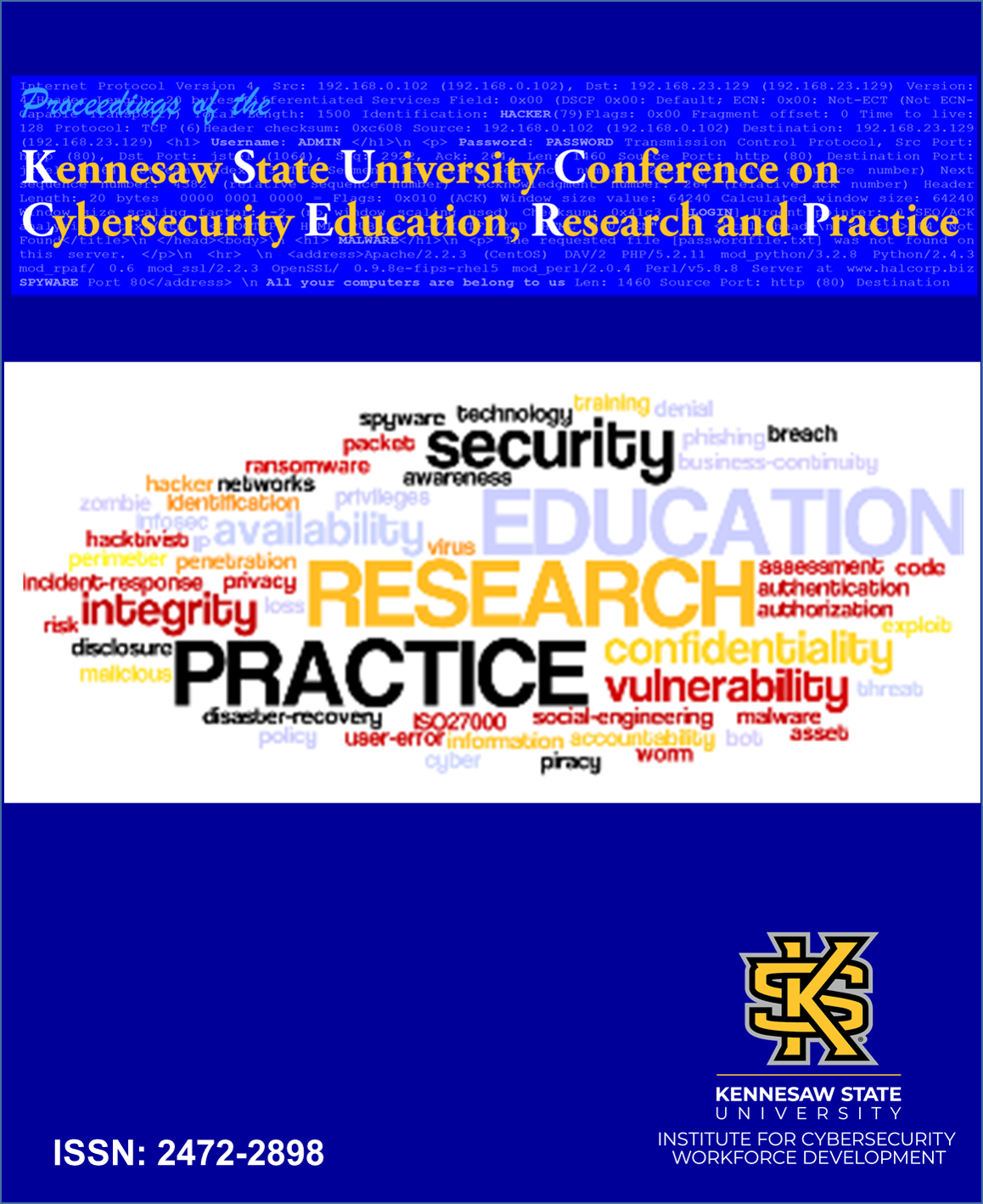Abstract
“An abstract of this article was published in the proceedings of the Conference on Cybersecurity Education, Research & Practice, 2017”. Communication has evolved since the beginning of mankind from smoke signals to drones to now the internet. In a world filled with technology the security of one’s device is not to be taken for granted. A series of research was done in order to gather details about network devices that can aid in the protection of one’s information while being transferred through the internet. The findings included but not limited to, switches, the seven layers of OSI, routers, firewalls, load balancers, proxies, web security gateways, VPN concentrators, network intrusion detection systems, intrusion prevention systems, signature based, anomaly based, and protocol analyzers. In conclusion, the findings help ensure major elements of security, which are confidentiality, integrity, and availability.
With the advancement of the internet also came the exposure of one’s data and information. If one does not have a security protocol in place it then increases the risk of one’s information being stolen. One of the most common security devices that individuals know is called the firewall. Firewalls are a set of hardware and software tools that monitor the flow of traffic between networks. Firewalls can regulate the connections from your network while allowing or not allowing connections based on the list of rules with which the firewall is configured.
“All people seem to need data processing” is a quick and easy way to remember the OSI model. In the application layer, one can find network application, mail, web, file transfer management, and remote connection. In the presentation layer, one can be provided a context for communication between layers, ASCII characters, encryption and decryption compression. In the session layer, one is introduced with controlling the dialogs between the computers, also controls duplexing, terminations, and restarts. The transport layer provides insight on transparent transfer of data, TCP/UCP, end-to-end connection, reliability, and flow control. The network layer is providing connection between Hosts on different networks, and IPv4/IPv6. The data link layer provides connection between host on the same network and MAC addresses. Lastly, physical layer describes electrical as well as physical specifications for device, cable, connector, and hubs repeaters.
The key elements of security are confidentiality, integrity, and availability. These terms are inextricably linked and the characteristics of the information must be protected remain the same. Commonly referred to as the C.I.A. triangle. Information that is stored on computers are almost always worth more than the computers that it runs on. Confidentiality ensures that only authorized parties with sufficient privileges may view the information. Integrity ensures that the data stored on devices is correct and no unauthorized persons or malicious software has altered data. Availability ensures network resources are readily accessible to unauthorized users.
Included in
Information Security Commons, Management Information Systems Commons, Technology and Innovation Commons
Security Device Roles
“An abstract of this article was published in the proceedings of the Conference on Cybersecurity Education, Research & Practice, 2017”. Communication has evolved since the beginning of mankind from smoke signals to drones to now the internet. In a world filled with technology the security of one’s device is not to be taken for granted. A series of research was done in order to gather details about network devices that can aid in the protection of one’s information while being transferred through the internet. The findings included but not limited to, switches, the seven layers of OSI, routers, firewalls, load balancers, proxies, web security gateways, VPN concentrators, network intrusion detection systems, intrusion prevention systems, signature based, anomaly based, and protocol analyzers. In conclusion, the findings help ensure major elements of security, which are confidentiality, integrity, and availability.
With the advancement of the internet also came the exposure of one’s data and information. If one does not have a security protocol in place it then increases the risk of one’s information being stolen. One of the most common security devices that individuals know is called the firewall. Firewalls are a set of hardware and software tools that monitor the flow of traffic between networks. Firewalls can regulate the connections from your network while allowing or not allowing connections based on the list of rules with which the firewall is configured.
“All people seem to need data processing” is a quick and easy way to remember the OSI model. In the application layer, one can find network application, mail, web, file transfer management, and remote connection. In the presentation layer, one can be provided a context for communication between layers, ASCII characters, encryption and decryption compression. In the session layer, one is introduced with controlling the dialogs between the computers, also controls duplexing, terminations, and restarts. The transport layer provides insight on transparent transfer of data, TCP/UCP, end-to-end connection, reliability, and flow control. The network layer is providing connection between Hosts on different networks, and IPv4/IPv6. The data link layer provides connection between host on the same network and MAC addresses. Lastly, physical layer describes electrical as well as physical specifications for device, cable, connector, and hubs repeaters.
The key elements of security are confidentiality, integrity, and availability. These terms are inextricably linked and the characteristics of the information must be protected remain the same. Commonly referred to as the C.I.A. triangle. Information that is stored on computers are almost always worth more than the computers that it runs on. Confidentiality ensures that only authorized parties with sufficient privileges may view the information. Integrity ensures that the data stored on devices is correct and no unauthorized persons or malicious software has altered data. Availability ensures network resources are readily accessible to unauthorized users.


